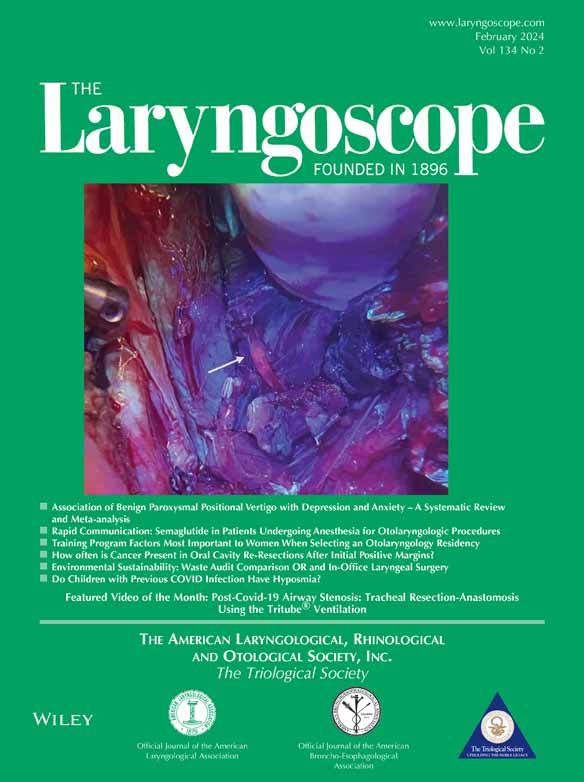How Often is Cancer Present in Oral Cavity Re-resections After Initial Positive Margins?
Meeting Information: Triological Society COSM, Boston, MA, USA, May 3–7, 2023.
This research was supported by the NIH/National Institute for Deafness and Communication Disorders (R25 DC020728) and Vanderbilt Clinical Oncology Research Career Development Program—K12 NCI 2K12CA090625-22A1. The authors have no conflicts of interest to disclose.
Abstract
Objective
To evaluate the rate at which carcinoma is present in the re-resection specimen following initial positive margins during head and neck cancer surgery and its impact on oncologic outcomes.
Study Design
Retrospective chart review.
Methods
A single institution retrospective chart review of patients that underwent curative-intent surgery for oral cavity cancer was performed. Final pathology reports were reviewed to identify patients with initial positive margins who underwent re-resection during the same operation. Initial positive margin was defined as severe dysplasia, carcinoma in situ (CIS), or carcinoma. Cox proportional hazards and Kaplan–Meier analyses were used to assess for associations with survival outcomes.
Results
Among 1873 total patients, 190 patients (10.1%) had initial positive margins and underwent re-resection during the same surgery. Additional carcinoma, CIS, or severe dysplasia was found in 29% of re-resections, and 31% of patients with initial positive margins had final positive margins. Half of the patients with a final positive margin had a positive margin at an anatomic site different than the initial positive margin that was re-resected. The median follow-up was 636 days (range 230–1537). Re-resection with cancer and final positive margin status was associated with worse overall survival (OS; p = 0.044 and p = 0.05, respectively). However, only age, T4 disease, and surgery for recurrent oral cavity cancer were independently associated with OS (p < 0.001, p = 0.005, and p = 0.001, respectively).
Conclusions
Fewer than a third of oral cavity re-resections contain further malignancy, which may suggest that surgeons have difficulty relocating the site of initial positive margin. Final positive margins are often at anatomic sites different than the initial positive margin.
Level of Evidence
4 Laryngoscope, 134:717–724, 2024




